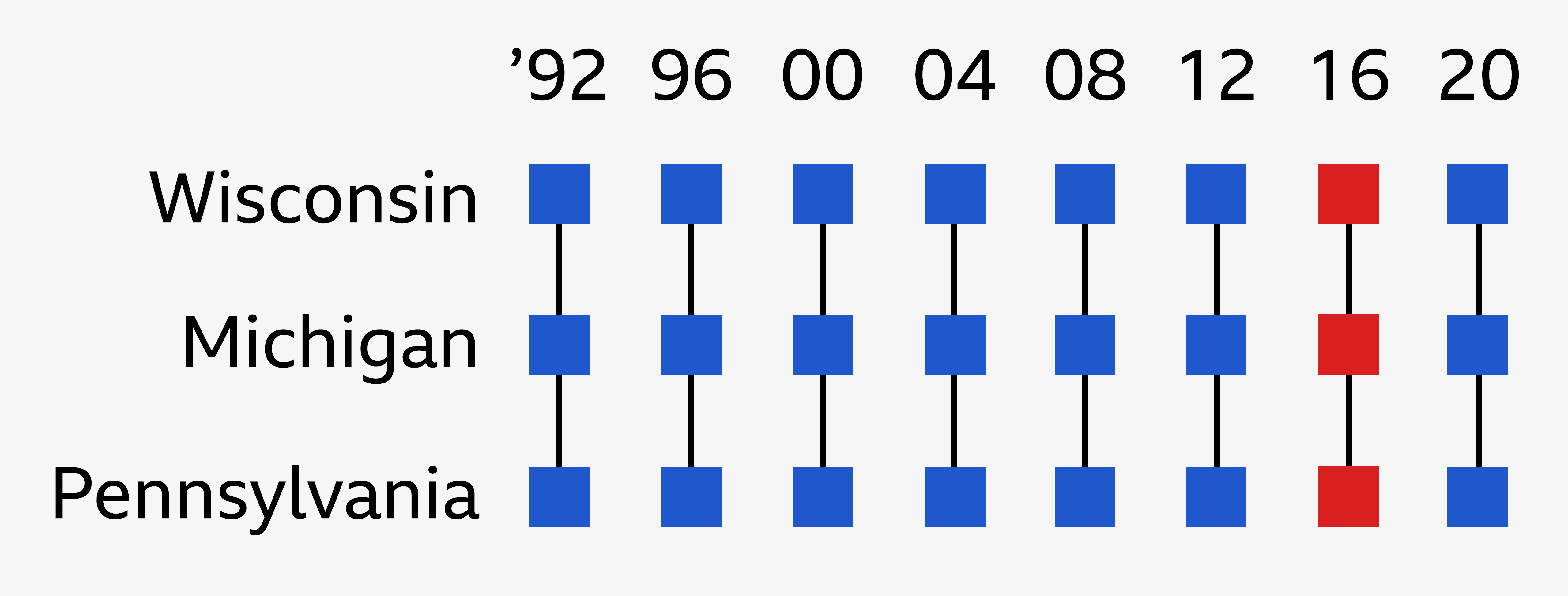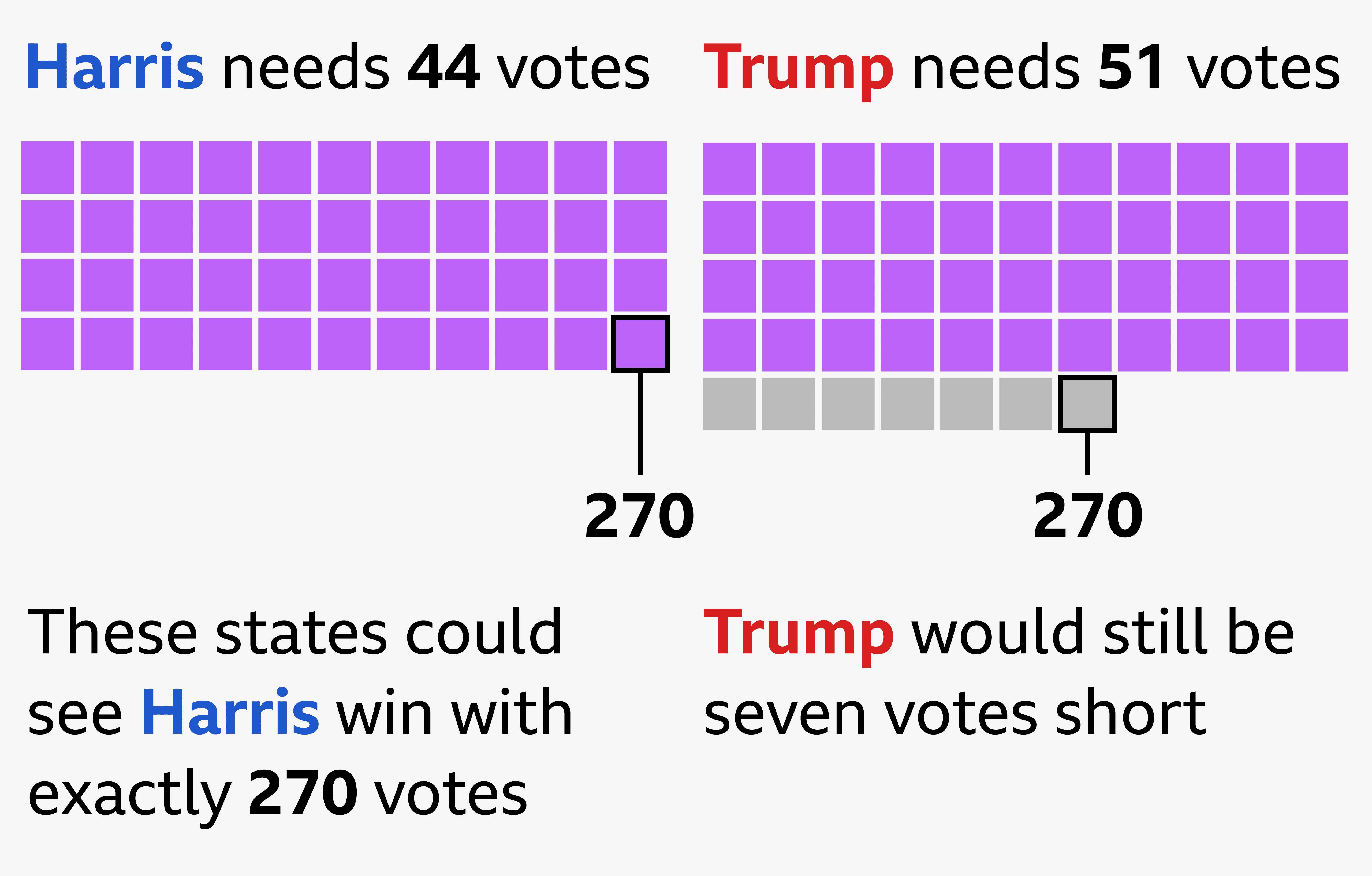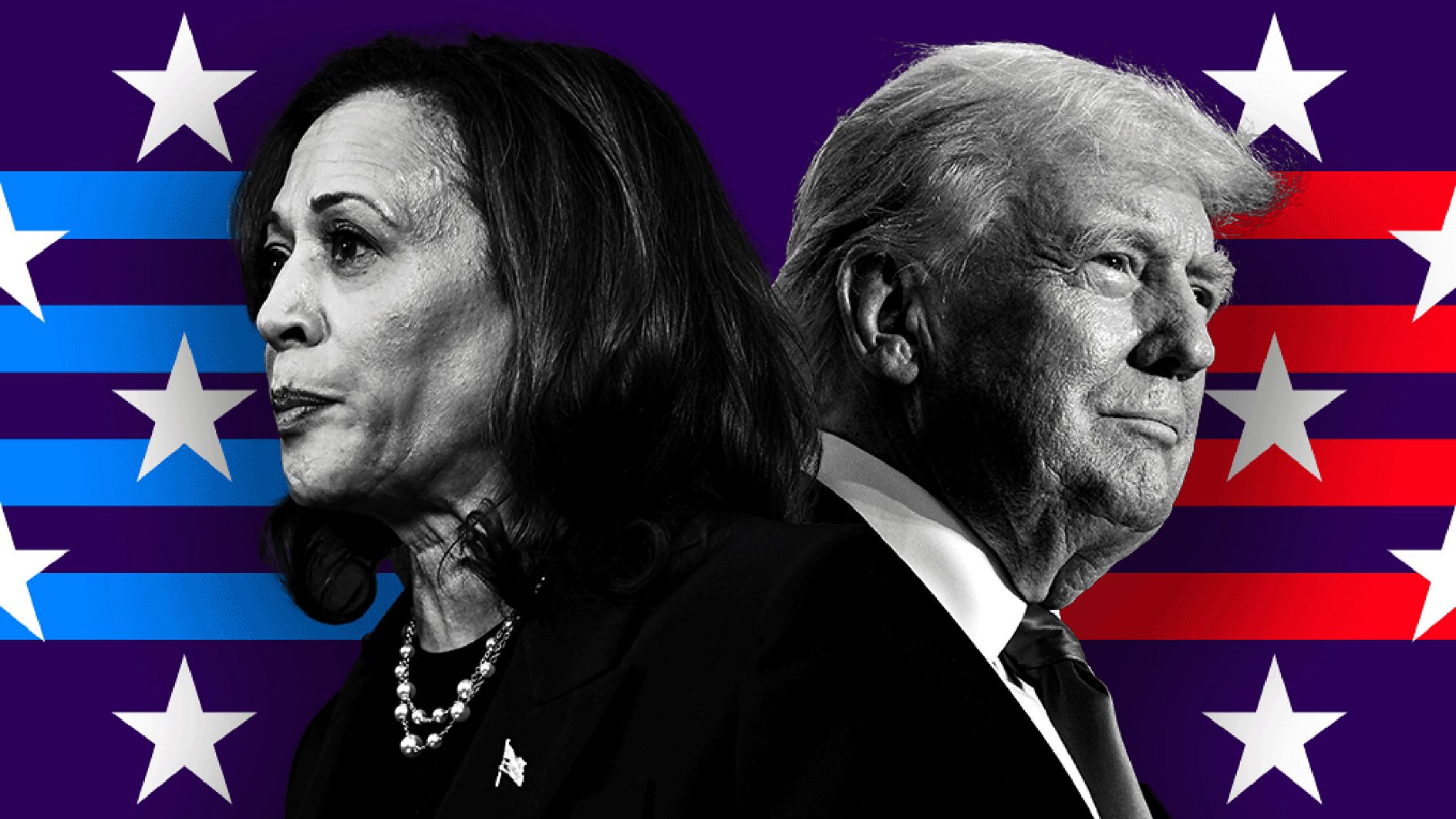
The three swing states of Pennsylvania, Michigan and Wisconsin are part of the Rust Belt – former heartland of the US manufacturing industry.
That industrial heritage means many voters in these states have traditionally been union members with a long history of voting for the Democrats – and the Democrats have taken all three states in seven of the last eight presidential elections.
When they did flip for Donald Trump in 2016, they all flipped together.

So history would suggest that one candidate will likely take all three states – and if that candidate is Kamala Harris, then she wins the election.
If Donald Trump swept up these three states again, he would still need to pick up at least one state elsewhere.
For Harris the key to these states – as with many states across the country – is to pile up votes in and around the cities by ensuring that black, minority and college-educated voters turn out on election day along with middle-class voters in the suburbs – particularly white women.

Trump's strength in these states is the opposite. He won the 2016 election by amassing huge winning margins in the rural areas of these states – appealing to those voters outside the cities.
Trump is hoping he can find even more votes in rural areas this year and his campaign is focusing on persuading younger men who may have never voted before to get to the polls. If they turn out in large numbers, it could further bolster his white working-class vote in the Rust Belt.

HARRIS KEY STATE: Pennsylvania
Pennsylvania is the biggest prize of the 2024 swing states with 19 electoral votes.
If Kamala Harris can win Pennsylvania plus one more from this Rust Belt group, she leaves Donald Trump needing close to a clean sweep of all the other swing states.
With Pennsylvania, Harris could pass 270 by winning just three swing states overall. Nevada doesn't have enough electoral college votes for this scenario, but Pennsylvania and any other two would be enough.
A Pennsylvania election
This is Pennsylvania's presidential election. The other states just live in it. According to some projections, the candidate who wins Pennsylvania has upwards of a 90% chance of winning the White House. It's that important. Pennsylvania, in a way, is a microcosm of the United States. It has big cities dominated by Democrats and Republican-friendly rural areas. Its demographic makeup is similar to the country overall. It has new technology companies and old industries; energy extraction and agriculture. A candidate can't be a one-trick pony and win in Pennsylvania. It is the place that both campaigns have been investing the most time and resource. And polls almost universally show the state sitting on a knife's edge.



















 US presidential results 2024
US presidential results 2024
 Latest US election news
Latest US election news
 A really simple guide to the US presidential election
A really simple guide to the US presidential election